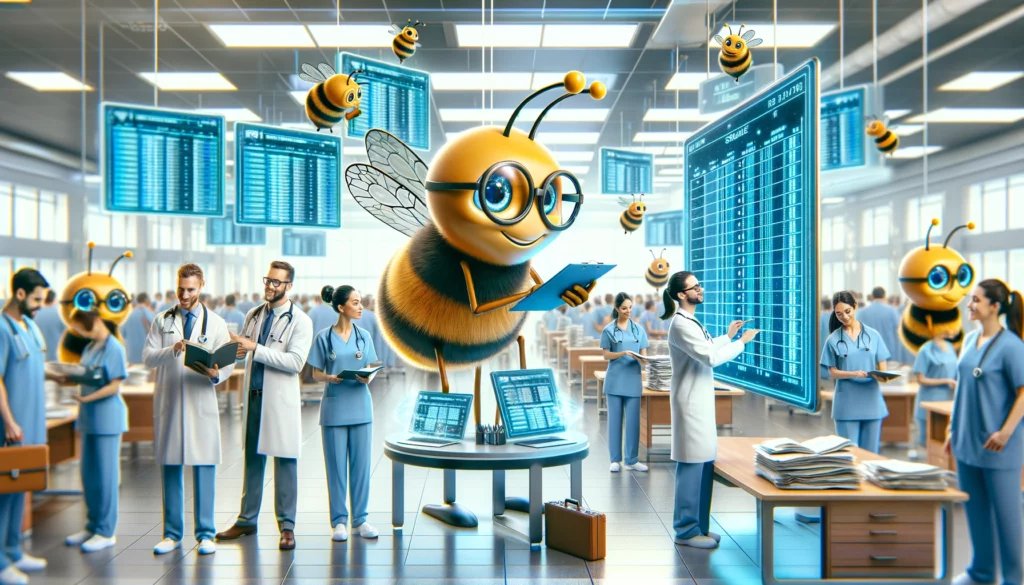Transforming Inpatient Staffing Strategies using AI in Health Systems

Shifthive has collaborated extensively with health systems and hospitals to revolutionize their inpatient staffing strategies. Many of these institutions initially struggled with understaffing, relying on outdated methods and technologies. However, there’s a more effective approach. By embracing AI-driven methodologies, these health systems have seen significant improvements in financial outcomes, patient care, and staff engagement. This shift from reactive to proactive staffing is pivotal.
Five Key Strategies Using AI in Hospital Staffing
Healthcare leaders are successfully adopting AI-driven staffing techniques to address understaffing issues. These are the top five strategies:
- Predictive Census Forecasting for Advanced Staffing Adjustments Traditional staffing relies on guesswork and historical data, often leading to chaotic, last-minute decisions. AI and predictive analytics allow for an accurate patient census forecast up to a week in advance. This data-driven approach enables staffing coordinators and unit managers to align staff with patient needs more effectively.
- Enterprise-Wide Visibility for Efficient Staff Deployment Complete visibility across the health system aids in deploying both clinical and non-clinical support staff strategically. This transparency fosters collaboration and ensures optimal resource utilization.
- Strategic Use of Premium Labor While agency staff or premium labor can mitigate short-term understaffing, they are costly. Predictive staffing technology allows for optimizing existing staff before resorting to expensive alternatives. It helps in implementing a tiered incentive pay system, aligning with the forecasted patient census.
- Alternate Staffing Plans for Flexibility Developing multiple staffing plans for different scenarios provides health systems with the agility to adapt to varying understaffing levels. This flexibility is crucial in managing acute staffing challenges effectively.
- Workflow Streamlining for Strategic Focus Automation in hospital staffing eliminates tedious manual processes, freeing up nurse managers and staffing coordinators to focus on strategic planning. This proactive approach allows for addressing staffing issues in advance, enhancing overall operational efficiency.
AI as a Catalyst for Staffing Transformation
The challenge of hospital understaffing is escalating. Many health systems are still grappling with ineffective staffing processes. The adoption of AI and predictive staffing technology can be transformative, allowing healthcare organizations to tackle understaffing proactively. This change not only improves financial performance and patient care but also enhances staff satisfaction by creating an efficient working environment.
The Future of Healthcare Staffing
For health systems contemplating a shift from manual processes to automated solutions, or those looking to refine staffing practices to align with organizational goals, AI and predictive staffing technologies offer a promising path forward. This proactive and strategic approach to understaffing will significantly benefit the healthcare sector, promoting better patient outcomes, financial stability, and a more satisfied workforce.
If you’d like to learn more about how Shifthive’s hospital workforce scheduling AI software can help your organization, please check out the resources below:
- Our product video: https://www.youtube.com/watch?v=rJtfvsAS7MY
- Book a demo with us: https://calendly.com/shifthive/zoom-meeting
- Our website: